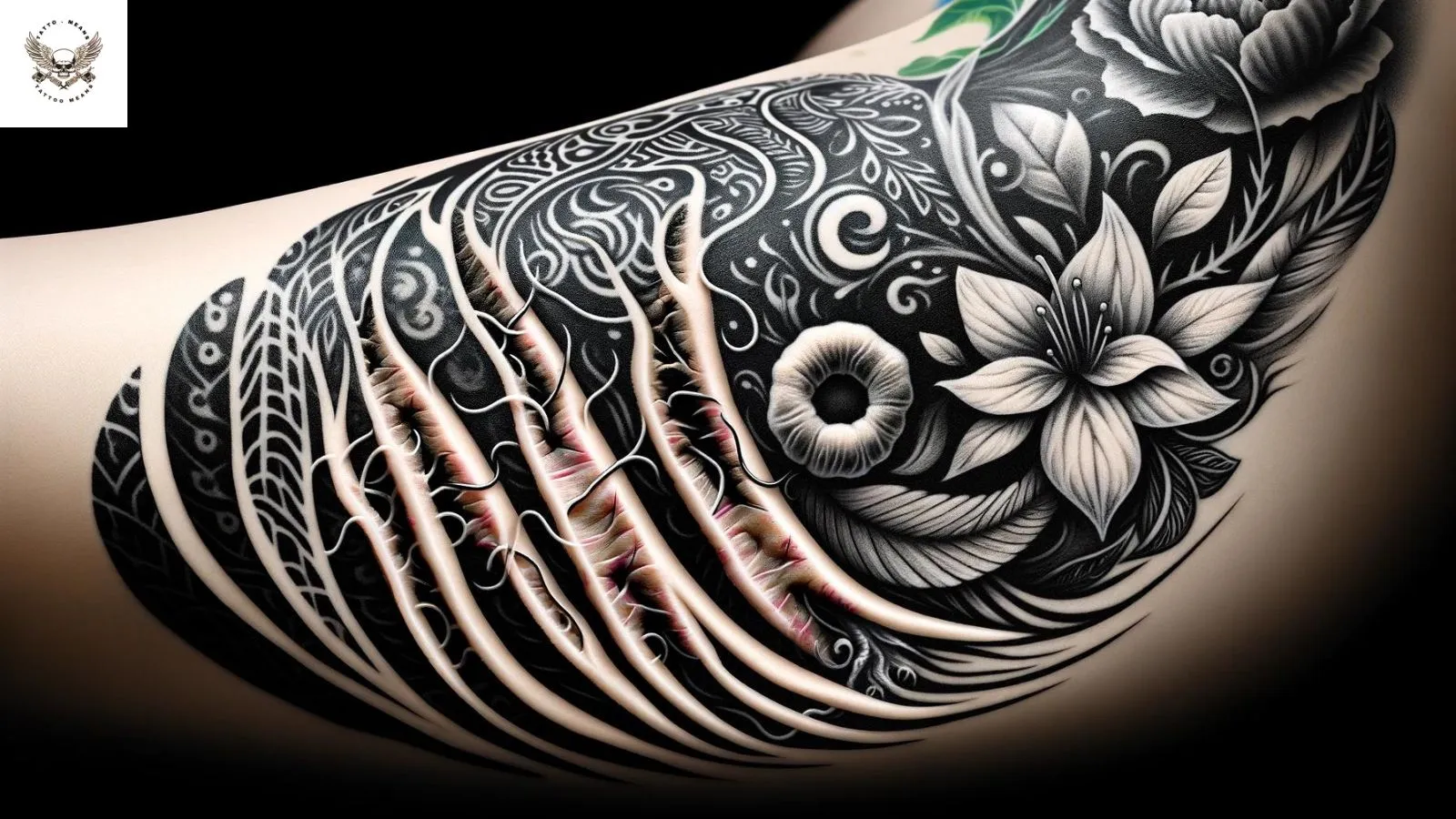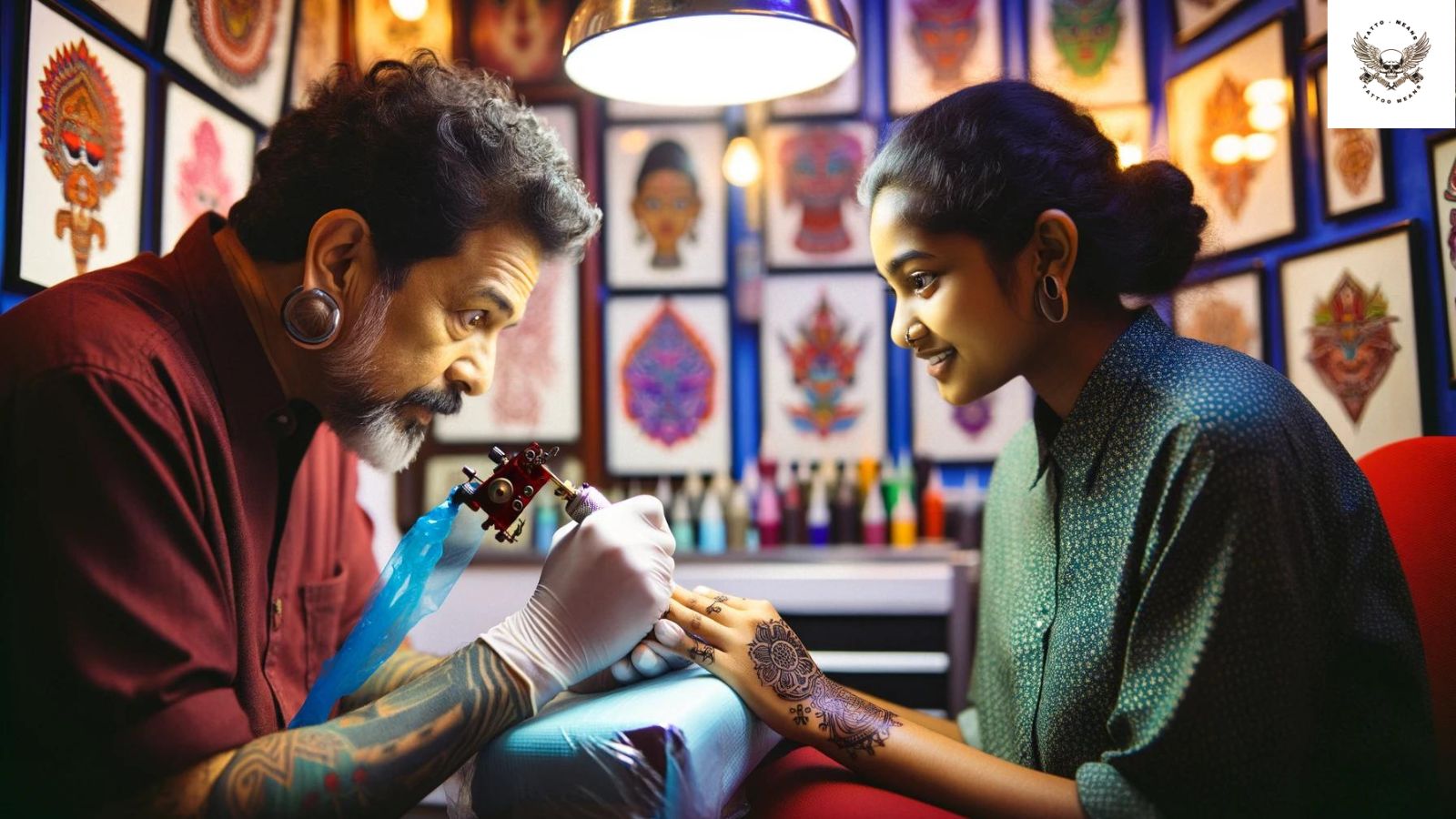When you’ve just added a new piece of art to your body, the care it receives in the initial weeks can significantly impact its longevity and vibrancy. A common question that arises among tattoo enthusiasts and newcomers alike is: “How long can a new tattoo be in the sun?” It’s a pertinent query, especially for those who’ve invested time, money, and a bit of themselves into their new ink. Let’s clear the air: sun exposure is strictly off-limits when it comes to fresh tattoos.
The first three to four weeks post-tattooing are critical for your skin’s healing process. During this time, your skin is not only recovering from what is essentially a series of minimal injuries but is also highly vulnerable to external factors, particularly the sun’s ultraviolet (UV) rays. These rays can cause immediate harm, such as sunburn, and long-term damage to the ink’s appearance, leading to fading and blurring much sooner than you’d expect.

Table of Contents
How long can a new tattoo be in the sun?
A new tattoo should not be exposed to direct sunlight for the first three to four weeks. This pivotal period ensures the artwork’s healing and longevity, setting the stage for a deeper exploration of tattoo maintenance and sun safety.
Risks of Sun Exposure
Getting a new tattoo is a significant event for many, marking moments, memories, or personal expressions permanently on the body. However, taking proper care of your tattoo, especially in the first few weeks, is vital for its longevity and vibrancy. One of the most overlooked aspects of tattoo aftercare is the impact of sun exposure. Let’s explore the risks associated with exposing a new tattoo to sunlight and why it’s essential to keep it protected.
Fading and Discoloration of the Ink
First and foremost, the sun is not a friend to your new tattoo. Ultraviolet (UV) rays can cause significant fading and discoloration of the ink. A fresh tattoo is especially susceptible because the skin is still healing and the ink is settling.
The sun’s rays can break down the ink particles, making a washed-out appearance. This is particularly true for specific colours that are more prone to fading, such as red, orange, and yellow. To maintain the vibrancy and clarity of your tattoo, it’s recommended to keep it covered from direct sunlight during the healing process and to apply a high-SPF sunscreen afterwards.
Increased Chances of Burning and Scarring
The skin over your new tattoo is sensitive and healing, making it more vulnerable to sunburn. Sunburn on a tattoo can not only be more painful but also increase the risk of scarring. The heat and UV radiation can cause inflammation and disrupt the healing process, potentially leading to blistering, peeling, and even infection. This can damage the tattoo design and lead to areas where the ink may need to be touched up or, worse, result in permanent scarring that alters the appearance of your tattoo.
Potential for Infection if Healing is Compromised
A new tattoo is essentially an open wound. Exposing it to the intense UV rays from the sun with proper protection can ensure the delicate healing process is maintained. If the skin’s protective barrier is damaged, it increases the risk of bacteria entering the wound, leading to infection. An infection can not only be harmful to your overall health but can also significantly affect the appearance of your tattoo. Keeping the tattooed area out of the sun helps ensure that the skin heals properly and reduces the risk of infection.
Sun Protection Strategies
Getting a new tattoo is an exciting experience, but it also comes with the responsibility of proper aftercare to ensure the design remains vibrant and infection-free. One significant aspect of tattoo aftercare is protecting it from the sun, especially when exposure is inevitable. Here are some effective strategies to shield your new ink from the sun’s harmful rays.
Opt for Clothing Cover
Covering your tattoo with clothing is the simplest and most effective method to protect it from the sun. Choose garments made from tightly woven fabrics that can block out the sun’s rays. This is particularly important during the initial healing phase, typically lasting for the first two weeks. During this time, your tattoo is most vulnerable to the damaging effects of UV radiation, which can cause fading and prolong the healing process.
Use a Breathable Bandage for Short Periods
When covering your tattoo with clothing isn’t practical, consider using a loose, breathable bandage to protect the area. This method is ideal for short periods of sun exposure. Look for bandages specifically designed to allow air circulation to the wound while protecting it from direct sunlight. It’s essential to ensure the bandage is not applied too tightly, as your tattoo needs air to heal properly.
Sunscreen: A Last Resort for Healed Tattoos
Once your tattoo has fully healed, sunscreen becomes an invaluable tool in your sun protection arsenal. Choose a broad-spectrum sunscreen with a high SPF (30 or higher) to apply over your tattoo before going out into the sun. Remember, applying sunscreen should only be done once the tattoo has completely healed, usually after two to three weeks, to avoid irritating the sensitive skin.
Aftercare and Timing
Proper timing is critical in tattoo aftercare. The first few weeks are vital for ensuring your tattoo heals beautifully. During this period, avoiding sun exposure as much as possible is key. If you must be in the sun, follow the protective measures outlined above to safeguard your tattoo.
Why Sun Protection Matters
The sun’s ultraviolet rays can significantly impact the appearance and health of your tattoo. UV exposure can lead to fading, blurring, and even distortion of your tattoo’s design over time. Moreover, since a new tattoo is essentially an open wound, there’s an increased risk of sunburn, which can lead to pain, scarring, and delayed healing.
Aftercare and Long-Term Protection
Caring for your skin after exposure to the sun is essential, especially if you enjoy spending time outdoors or have sensitive skin. Proper aftercare can significantly impact your skin’s health and its ability to defend itself against harmful UV rays. Here, we’ll explore effective strategies for sun protection aftercare and emphasize the ongoing importance of sun safety.
Aftercare Steps for Sun-Exposed Skin
Gentle Cleaning: After spending time in the sun, it’s important to gently cleanse your skin to remove any sunscreen, sweat, or dirt that may have accumulated. Use a mild, fragrance-free cleanser that won’t irritate your skin. Avoid hot water, which can further dry out sun-exposed skin, and opt for lukewarm water instead.
Moisturizing: Rehydrating your skin is key after sun exposure. Look for moisturizers that are rich in ingredients like hyaluronic acid, glycerin, and ceramides, which help to retain moisture. If your skin is particularly dry or sunburned, aloe vera can provide a soothing and cooling effect, helping to reduce inflammation.
Consistent Sun Protection
The role of SPF sunscreen in sun safety cannot be overstated. It’s not only critical during the healing process of any skin damage but also as a long-term strategy to protect against future harm.
Daily Application: Incorporate a broad-spectrum sunscreen with an SPF of 30 or higher into your daily skincare routine, even on cloudy days or during the winter months. UV rays can penetrate clouds and windows, making daily protection necessary.
Reapplication: Reapply sunscreen every two hours when you’re outside, more often if you’re swimming or sweating. This ensures that your skin remains protected throughout the day.
Protective Clothing: Wear hats, sunglasses, and long-sleeved clothing to provide additional barriers against the sun’s rays. Special sun-protective clothing is also available, designed to block UV rays more effectively than regular fabric.
Importance of Consistent Care
Maintaining a routine that includes sun protection and proper aftercare is vital for keeping your skin healthy. It helps prevent premature ageing, lowers the risk of skin cancer, and ensures that your skin remains vibrant and resilient against environmental stressors. By adopting these practices, you’re caring for your skin today and preserving its health for the future.
Wrapping Up
In conclusion, the question “How long can a new tattoo last in the sun?” highlights the critical importance of protecting fresh ink from the harmful effects of UV radiation. The first three to four weeks after getting a tattoo represent a crucial healing phase, during which exposure to the sun should be meticulously avoided. This period is vital for ensuring that the tattoo heals properly, maintains its vibrancy, and remains free from the risks of fading discoloration and potential complications such as burning, scarring and infection.







